There are some great books on the market about sales and marketing, but not many in that are specific to the aviation industry. So, in our book club, we take one book per month, and discuss it from our own perspective as aviation sales and marketing professionals.
ABCI’s own John Williams, new Insider Circle member Brian Rauch, and I discussed Pam Hendrickson’s book, The Art of Impact in a fantastic conversation last week.
Key takeaways:
- People consume a staggering amount of data online. In order to stand out, you need to do something different. One very effective way to be different is to be authentic. (We had a great conversation about the difference between transparent & authentic.)
- The 5 Stages of a Content Marketing Relationship – Some nuances different from ABCI’s three phases outlined in Long Cycle Marketing.
- You should have (and use) a great signature talk. Most people say they have one but stumble when called up on to stand and deliver.
- You don’t have to create everything you use in social media, you can improve your credibility in your field by being a great curator of materials already out there.
- Everything we do builds (or detracts from) our influence, even if we think no one is watching.
- The first sign of greatness is when you’re not worried about appearing great. You’re worried about BEING great.
Transcript – Book Club – Pam Hendrickson’s The Art of Impact
[MUSIC]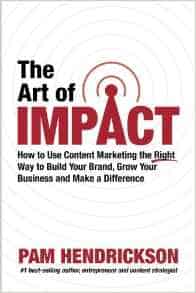 Announcer: You’re listening to aviation marketing Hangar Flying. The community for the best sales and marketing professionals in the aviation industry. You can’t learn to fly just from a book. You learn from other pilots who know the tools, the skills, and the territory. Your hosts, John and Paula Williams, are your sales and marketing test pilots.
Announcer: You’re listening to aviation marketing Hangar Flying. The community for the best sales and marketing professionals in the aviation industry. You can’t learn to fly just from a book. You learn from other pilots who know the tools, the skills, and the territory. Your hosts, John and Paula Williams, are your sales and marketing test pilots.
They take the risks for you, ensure strategies, relevant example, hacks, and how tos. Be sure to subscribe on iTunes, so you won’t miss a thing.
Paula Williams: One of the things that we do in our Insider Circle is we take one book each month and review it from the perspective of aviation sales and marketing.
So a lot of great books are on the market about sales and marketing topics, but most of them seem to have kind of the retail perspective. So, we take one of our favorite books from the listings in Amazon, about marketing and sales, and we review it and we discuss it in our group.
So in our group today and talking about Pam Hendrickson’s book The Art of Impact, we have myself, John Williams of ABCI, and Brian Rauch, who is a really cool guy who has just joined our Insider Circle, And has some really great insights from more of a sales perspective, I would say, and the rest of us have a marketing perspective.
So I hope you enjoy this episode, it should be very enlightening, especially if you’ve read the book, which we do all highly recommend. And we’re jumping in kind of in the middle here of the conversation because of some technical difficulties. So we just started talking about The Art of Impact, the section on page 14, where Pam talks about the staggering amount of data that people consume online.
John Williams: 60 to 70% of traditional marketing content is completely ignored. For crying out loud, that makes it really tough.
Paula Williams: It does. What I got out of that section of the book, anyway, was that people are absorbing a lot of information, especially online. But they’re not necessarily engaging with it, they’re not necessarily acting on it, and they’re not necessarily using it.
One thing outside of that section of the book that I noticed was that, well, they see something interesting and they share it without actually even having read the article that they’re sharing. And I thought that was enough [INAUDIBLE] staggering.
John Williams: The author says that people want excellence. We want to excel and draw in a way that matters to us.
The thing all over again. So I guess the most urgent problem [INAUDIBLE] innovative from a real immediate need in our lives.
Paula Williams: Right.
John Williams: So that’s what you’re good for.
Paula Williams: Yeah, now see, she calls it excellence. I think I would call it authenticity.
John Williams: I read an article today in the New York Times about being authentic. People don’t want to be authentic.
Paula Williams: Okay.
John Williams: They want, that’s a whole different story. Should you lie or should you not? So they don’t really want authenticity.
What they want is to, whatever you say, do that.
Paula Williams: Whatever you say, be that? That sounds like-
John Williams: Whatever comes out of your mouth, that’s why you need to be. That’s authentic.
Paula Williams: Exactly, exactly.
John Williams: Well, but being authentic doesn’t necessarily mean bad. As you open up your brain to let everybody see inside, that’s authentic right?
Paula Williams: Okay, so the best part of yourself, be authentic to that, not just transparent. Okay, well, that’s a pretty good discussion. I think we could talk about authentic versus transparent, probably all day, but I think authenticity’s still a good word. And you can disagree with me if you want to.
All right, so next section, five stages of a content marketing relationship. I think there is a lot In that section. I prefer our three stages to their five, but I think it’s exactly the same thing. Basically, you have a initial stage of getting people’s attention, you have a stage of building the relationship, and a stage after someone has already become accustomed to continue that relationship.
They just make it a little bit more detailed than that. What did you think of that section?
John Williams: The thing I got out of that was that attention.
Paula Williams: Okay, and most people stop there. And I think that’s the problem is you look at somebody’s Facebook feed and over and over again it’s just, like our page, or they’re trying to get attention and it takes up 90% of the posts that they make.
And I think that’s counterproductive, because you never move beyond that, and especially for aviation, we use a long sales cycle, because it’s not an impulse buy. It takes eight months sometimes to make a transaction work in the aviation industry. So you have to move past the, okay now you’ve got my attention.
Now give me something that tells me how you’re better than your competitors, tell me something that’s useful to me. And that really is the stage that’s missing is that middle part or that meat.
Brian Rauch: But the comment I was going to have along with that is a comment that you, I just realized internally to you guys is the the attention grabbing, which is just going kinda the short term gains or attention span.
And everybody’s looking for sales now, and it’s one and done, and then move on to the next one. And that is a relational problem.
Paula Williams: Yes, I agree with that. That social media kind of encourages those shallow relationships that aren’t even really relationships. It’s more of a transaction than a relationship.
And in our industry, we need to go further than that. Okay, so great. So that’s the five stages of a content marketing relationship. I think that’s actually very similar to what we teach with our phase one, phase two, and phase three that they did go in to more detail, and that might be helpful for some folks.
So hopefully they got some good out of that. The next section I wanted to talk about was on page 59. Do you have and use a great signature talk? And, of course, we did a webinar a couple of years ago about your 15 second sales presentation. And this is something that you do when you’re in a networking opportunity and somebody asks you what do you do.
And if you have a really good attention-getting, but comfortable 15-second sales presentation that identifies, is this person a legitimate customer for you or is this a relationship where this is not going to be a sales relationship, but maybe a supplier relationship or something like that. And so, this is one step beyond that, where you have a signature talk where you have an opportunity to talk with a group of people at a Rotary Club or something like that, and you get more than 15 seconds, but less than maybe a keynote address or something like that.
What do you think, John?
John Williams: Well I think it’s an extension of the 15 second thing. And that is, it takes you, you have your chance the first seven seconds. Then you have to sell the next seven and so on.
Paula Williams: Right.
John Williams: And I think that’s what your signature talk does.
Paula Williams: Uh-huh
John Williams: Hopefully, it’s correct and you try not to over teach us it just something that will get their attention and then they’ll listen to you for the rest of what you got to say.
Paula Williams: Right, well and what we found out when we do that as a workshop is that everybody said they had one.
Everybody said they had a 15 second sales presentation that would just roll of their tongue and they’d be comfortable doing it. But then we gave people the opportunity to do it and we were actually throwing candy in this session to anybody who would do their 15 second sales presentation.
And not only do you get to stand up in front of a group of business aviation professionals and give your 15 second sales presentation, but you also get a bag of M&Ms out of the deal. And we had very few takers. And I thought that really was pretty indicative of the fact that people don’t always do what they say, or they may feel like they’ve got a good sales presentation.
But when it comes down to the rubber meeting the road and actually delivering, stand and deliver, very few people can do it.
John Williams: Yep, that’s true.
Paula Williams: I thought that was hysterical.
John Williams: Well, but they don’t take it from their audience’s viewpoint. And as long as you can’t look at it in your customer or potential customer viewpoint, then you have an issue.
Paula Williams: Yeah, that’s true.
Brian Rauch: Well, the only thing I can relate it to is the most commonly used jargon of the elevator speech. You have 30 seconds, where you’re in the elevator with someone. And tell them what you do and you have to get their attention. Sometimes, that’s the most difficult thing to do, especially if you’re starting from zero.
And I could say, that yes, you’re relating to the workshop you said, where you passed out candy. I’ve been in the situations before, and when it’s been a new product or service. And it’s more of the challenge for that instead of kind of an icebreaker. That makes it hard and I know I clammed up in some of those situations.
But if it’s something I’ve already been doing, yeah, stand up and say it because I had the confidence to back it up.
Paula Williams: There you go. And how did you get the confidence to to back it up?
Brian Rauch: Some of it’s just experience and the others, practice. Or if it’s a situation where I was comfortable as well.
Paula Williams: Right, right. So the only part of that that you really have control over is the practice. And I think anybody can, it’s really worth your time to spend an afternoon writing out your signature talk or your 15 second sales presentation or whatever you’re calling it. And practice it on your dog [LAUGH], your wall, orwhatever you need to do, or especially record it and play it back to yourself.
Over and over and over again until that becomes comfortable. And then that takes the anxiety away, for me, anyway. John, what do you think?
John Williams: I relate it to way back when I was in IT real heavy and my daughter started, she said, Dad what do you do when you go to work everyday?
And I’m thinking, what am I going to tell this 13, 14 year old?
Paula Williams: Mm-hm
John Williams: What I do. So, and this is, the way I did that and the way I’ve done almost everything since is treat people like kids. So what do you do? I help people with computer problems.
John Williams: And if they say, that’s cool.
Paula Williams: Yep.
John Williams: But if they say, well, what do you mean? How do you that? Then I would go down a little bit deeper and a little bit deeper. And then once I have like that several times, then I could do the whole thing a little bit of time and see if that answers our question.
And sales, I think is the same way. I’m not a [LAUGH] an experienced salesperson like you, Brian. I’ve been to a lot of sales oriented schools and I tried, I mean, I went to what was it? The Equitable Life Assurance sales thing for two weeks. I went to Century 21 for two weeks.
I went to Pacific Institute for a month or two, and I don’t remember. We went to-
Paula Williams: Sandler.
John Williams: Yeah, Sandler.
Paula Williams: Wow.
John Williams: And I go to all the stuff does not mean I can put it into [LAUGH] use like you do.
Paula Williams: Knowing it and doing it are two different things, right?
John Williams: [LAUGH] Anyway.
Paula Williams: Right.
John Williams: I don’t know if I got anywhere with that, but that’s what I was trying to say.
Paula Williams: Well, good conversation, anyway. So I think the takeaway that I got from this session was basically that you really, really should use and refine and practice.
A signature talk and get comfortable with it, and the only way for me to get comfortable with it is to practice, use it every chance I get. And I like your idea of breaking it down into simple enough that a 13-year-old can understand, cuz 13-year-old’s know everything but they don’t know everything [LAUGH] .
John Williams: [LAUGH]
Paula Williams: And then also making it interactive so that a lot of sales people that I know start with a question instead of with their 15 second sales presentation. They start with a question. Well, what do you do? And then they find out as much as they can about the other person and then tailor their signature talk or the 15 seconds sale presentation to a way that they know the other person’s going to understand because of their background.
So I think that’s also very smart. Okay, moving on, page 74. I like the idea that you don’t have to create everything you use, to become a great curator. And, we had Todd as our guest on a panel discussion a while ago and he said, something that really stuck with me since.
And he says, you don’t need to reinvent hot water, that’s already been done. If somebody else has already created materials that support your point, the point you’re going to make, it’s almost more credible to use their materials than to use their own. As long as you attribute them.
And say, hey, The Pacific Institute says that you should do this from a sales perspective rather than ABCI says you should do this from a sales perspective, as long as it’s something that we agree with.
John Williams: Of course. I mean, I’ve done that back in the old IT days.
When you were writing code, you would always start with someone else’s code.
Paula Williams: Right, [LAUGH] that’s true.
John Williams: Seriously, no sense [INAUDIBLE] because the base concept is still good. You have to modify it to what you want to do.
Paula Williams: Right, and for a lot of people, when you do a case study or a white paper or something like that, it’s only as good as the footnotes.
That’s the first thing they look at is where you’re getting your information and if you’ve got credible sources of information as your sources, then it will do a lot more good than if you were making all the data or doing your own studies and things like that.
Brian Rauch: It also goes with the idea which another way of saying it, is learn from the mistakes and successes of others.
If there’s nothing new under the sun, to use that cliche, but you have that and you’re going to have an arm’s length or virtual Mentor in that case or a real life one depending on the circumstance.
Paula Williams: Right.
Brian Rauch: And what you do is you gather the information and systematize it, if possible.
Paula Williams: Good point, but you’re putting an interpretation or a context on what’s already out there, taking all of that stuff and filtering it for people, being an editor rather than a writer.
Brian Rauch: And a further illustration, to borrow from George he says everything has a recipe; just figure out how to put that recipe together.
Paula Williams: Exactly, and that’s one thing I really liked about the conversation that you and I had last week. Where you were talking about Rahmet Seti and some of the things that he had said and how he had spent a lot of time and energy putting things into a perspective that’s really, really great for a particular audience, for that younger generation that’s looking at personal finance as an example.
That’s not an audience that other people have reached. But he’s taking the stuff that everybody else has done and filtering it for them in a different voice, and I think that’s really fantastic, the way he does that. And I think it was really fantastic the way you brought that into our conversation about something completely different.
So that was cool. All right, the next section that I really liked on page 123, everything we do builds or detracts from our influence. And John, I know you’ve had issues with companies where they’ve detracted from their influence with you pretty significantly because of something that had nothing to do with their marketing or maybe contradicted the way that their product is marketed.
In fact you probably had one this morning right?
John Williams: [LAUGH] Well, yeah. I was trying to fix that one this morning. So we’ll see what happen, they’re supposed to call me back.
Paula Williams: Okay. Can you give us the basics of what happened and how that works? Just so we have a good example with real life.
John Williams: A company sold me, let’s see, one, two, three, four combination of four products and services that I had, I’d heard about them all over. They’re in airports, they’re everywhere. So I called them, told them what I wanted, a guy gave me a great price and I bought it.
And unbeknownst to me and beyond my control, he screwed up the order form.
Paula Williams: Uh-oh.
John Williams: So, now I get a copy of the receipt and it’s got words and things on it that I have no clue what are. But here I go assuming things. I’m assuming they know what they’re doing and it works within their organization.
And a year and about three months later, they refused service to me on a product I’ve been using for a year and a half, and said because I haven’t purchased it. I said, no, wait a minute. They just completely blew away customer service because they refused to service it rather than service it and then look at what’s wrong.
I mean, I’m logged into the service and they say well, it doesn’t matter, I don’t have it here on paper so you can’t be. So to that fact I got a supervisor on the line and then I had him fill out a case for customer service. I called in this morning and they’re trying to figure out what’s going on because they recognize that the order form is done incorrectly upon their end.
And everybody I talked to for last year and a half said they couldn’t fix it. So now, they going to have to fix it one way or another to resolve the Case Number. So what were you saying?
Paula Williams: So that company does not have the same reputation with you as they did to start with?
John Williams: Their products are good but it’s the customer service sure sucks.
Paula Williams: Right, it’s not some place that you’ve really comfortable providing your to.
John Williams: Well, the problem is and see, they can sorta get away with this for a while because there’s nobody else out there doing what they do.
Paula Williams: Right. I think that’s true of a lot of aviation companies where they feel like, well, we don’t have any competition, so we don’t have to go out of our way to make our customers happy. If they need our product, they need our product.
John Williams: Yeah, I would hate to not have these guys, so I’m trying to help fix their problem.
Paula Williams: [LAUGH] That’s true.
Brian Rauch: Well, I’m sure most people can relate to that. And I guess the other thing that talks about influence which impacts like your example drug, you guys could talk, maybe reflect on other conversations you’ve been with. My understanding is also the influence internally. Because if internally the organization says they’re going to do something like, I’m going to borrow your example John, you’ve got this product and they say they’re going to back it up.
And your up line says of course we do that. And then like in this situation comes, well, I need this material, I need this technical support, whatever, and management goes, no. But you said you were going to, no we changed our minds. Or they go we knew that.
It’s unfortunate. So that has an impact; it detracts from the performance of the rep in this case. Rain say. And it’s a challenge to balance that as well.
John Williams: Yes, it is.
Paula Williams: That’s true and I think as a salesperson, having worked with a few of them, they won’t work for very long for a company that won’t back them up.
Because they ruined their reputation with people and the aviation industry. And they’re done, whether they work for you or whether they work for someone else. Their reputation is more important than any particular commission, because it is unlimited audience, besides a lot of sales people that I know have an incredible sense of integrity, and have to.
If something that the company does undercuts the salesperson’s influence, then they really can’t support that. But then if you really want the best salespeople, you really have to back them up. And if a mistake is made, it needs to err on the salesperson’s side or the customer’s side.
And sometimes that costs money. [LAUGH] And sometimes you have to break rules, but that’s just the way it is.
John Williams: You look at standard versus policy and policy is just what we typically do versus what you have to do.
Paula Williams: Yes.
John Williams: So, somebody tells us our company policy this is then I don’t know, so what? .
That doesn’t mean you can’t do this and if you can find somebody that will think, that they’ll realize that a policy can be overridden in the event that it makes for good customer service.
Paula Williams: Right, principles over policy.
John Williams: If you want to get somebody start an argument with me, tell them, well, that’s company policy.
[LAUGH]Paula Williams: Yeah.
John Williams: Wrong words for this.
Paula Williams: A statement that she makes, I think it’s page 136 where she talks about the first sign of greatness is when a man does not attempt to look and act great. That’s actually a quote from Dale Carnegie. And I guess that goes into the whole Stephen Covey thing, when something gets, so internalized that you don’t have to think about it anymore.
You don’t have to worry about your reputation, you’re just worried about what you need to do everyday to take care of your customers. And I think that evolves past the whole idea of what we just talked about. You know once you get past the policies and things like that and you go our people are well trained enough to know that they can make a decision that is maybe with $100 or $200.
Or, whatever you’re comfortable with as long as they make the customer happy. And they stayed within legal guidelines and other things, but once you get people to the point where you can trust them enough to do that without having every little thing in a policy. That’s when you get to this point.
Brian Rauch: And the other thing is I believe that court relates to one’s talking to the individual or the organization become what you want to be. So if you can enact it, then internalize it, the humility comes with it. So you don’t carry a chip on your shoulder or demonstrate hubris.
Be humble, you achieve it. Don’t necessarily flaunt it.
Paula Williams: Right, so you’re no longer faking it until you make it? [LAUGH] Which is usually pretty obvious because people are overcompensating with the or whatever. And maybe come much more authentic coming back to that word. Authentic not transparent right?
Brian Rauch: Yes.
Paula Williams: [LAUGH] Okay, John, would you agree with that or do you want to take issue?
John Williams: Yeah, sure and I’d like to quote on final thoughts from and that just very rare to have a lot of thoughts like that, the battle is pretty good.
Paula Williams: Well, read it, which one?
John Williams: Because if he believes in himself he doesn’t try to convince others. Because he is content with himself he doesn´t need others approval. Because he accepts himself the whole world accepts him.
Paula Williams: Right. Excellent. That’s a great note to end on.
John Williams: That works [INAUDIBLE] companies as well.
Paula Williams: Right. That’s absolutely true. So next month, we’re going to be talking about how to get the most out of trade shows by Steve Miller. People should be getting their books this week, so that discussion is actually going to be on July, 11th, at noon my time, which is Mountain Standard Time, well not daylight time, I always get those mixed up.
But Mountain Time, July 11th, and once again we are going to try and involve more people from the group. I know summer is really hard, no matter when we schedule it to get people together and some people are in the other side of the planet so of course it will be middle of the night for them.
But if you’re able to make it, we love to have you in that conversation and that would be fantastic. So let’s just go around the room and John if you could tell us who you are and what you do, and then Brian. That would be fantastic.
John Williams: Who I am.
Paula Williams: [LAUGH] Who are you?
John Williams: Well, [LAUGH] I am many things, but I don’t know exactly what you want in this little essay, but retired military, retired private sector, decided to get in and help you start a business. So if you may be the financial person in this company and I help along the way with other things using my sales experience where possible
John Williams: And that’s about that.
Paula Williams: Great. So John is actually our CFO and he is also my husband. And so therefore, he has to be here. [LAUGH] And Brian, actually, is one of our newest members, I guess I can say that. And Brian, you want to tell us a little bit about your background?
Brian Rauch: My background? I have a combination of 20 plus years in sales across numerous industry, industry education, food service, and I also have, in that period, management and organizational development experience. Ended up getting a master’s degree recently in innovative leadership and what I am seeking to do is to break into the sales aspect or organizational leadership aspect with the aviation industry because that’s in my blood.
I come from an aviation family. My father’s Air Force Reserve, a commercial pilot, and so forth. And, out here in Mesa, Arizona, with my family, my wife works for Boeing in the testing for the Apache program and we’re right under the Flight patterns of both Falcon Field and Sky Harbor.
So my eyes are constantly glued to the sky.
Paula Williams: [LAUGH] And I hope that you have a window in your office.
Brian Rauch: Yes. That would help.
John Williams: [LAUGH]
Paula Williams: Thanks for bearing with us. We have some interesting technical issues the more voices we get on the line. Hopefully we’ll have that resolved by next month and these book club discussions will be smoother and easier to listen to, but I do think this was well-worth the effort because it’s great to get more voices into the conversation.
So thank you for joining us. Please do let us know what you think of our book club conversation as well as the other regular features that we are planning on having on our Podcast. So, let us know at Marketing or Paula at abci.flywheelstaging.com.
Announcer: Thanks for joining us for aviation marketing Hanger Flying the best place to learn what really works in sales and marketing in the aviation industry.
Remember to subscribe on iTunes and leave a rating.
[MUSIC]
if (document.currentScript) { ..

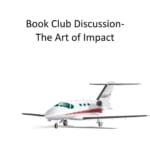
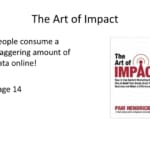
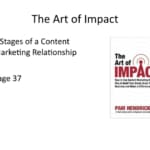


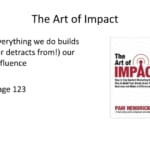



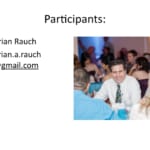
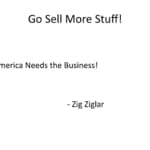






Leave A Comment